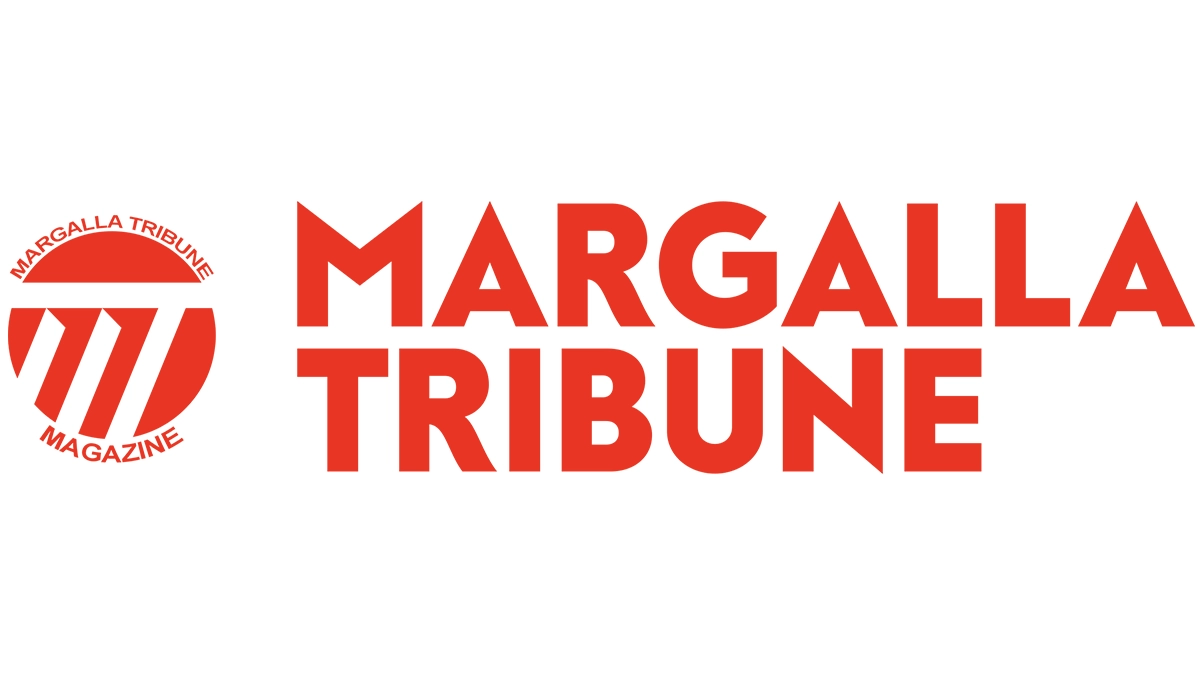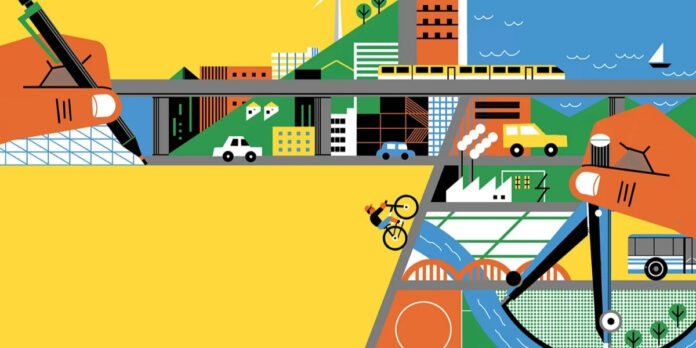Pakistan’s urban sprawl is devouring farmland, deepening inequality, and risking food security. Is it time to rethink how our cities grow?
The Crisis of Sprawl
While the daily chaos of traffic and the struggle for pedestrian survival dominate headlines, an equally insidious crisis unfolds more quietly on the peripheries: the relentless assault on our nation’s food security. Stand on the edges of Islamabad or Rawalpindi, gaze towards the Margalla hills or out past the new airport, and witness the transformation. Less and less green meets the eye, replaced by an encroaching tide of grey and beige concrete. Vast tracts of fertile agricultural land, the very soil that feeds our rapidly growing population of over 240 million, are being systematically devoured. Housing society after housing society, names like DHA, Bahria Town, and countless others have become synonymous with this expansion, often spearheaded by powerful entities with seemingly unchecked authority to acquire vast swathes of land and march inexorably across fields that once yielded wheat, vegetables, mustard, and fodder for livestock.
Isn’t it strategically moronic for a nation grappling with economic fragility, water scarcity, and the escalating impacts of climate change to pave over its most productive agricultural lands? Doesn’t a nation’s fundamental strength, its resilience, its very sovereignty, rely on its ability to feed its own people? A starving population, history teaches us, cannot effectively defend its borders or build a prosperous future, no matter how sophisticated its weaponry. Yet, the dominant development model relentlessly prioritises horizontal sprawl, characterised by single-family bungalows, often on large plots within gated compounds, over intelligent, resource-efficient vertical growth. Why are policies not actively promoting and facilitating mid-rise (G+5 to G+10 stories) developments within existing urban boundaries? Such buildings could incorporate housing, shops, clinics, and schools, fostering walkable, mixed-use neighbourhoods and drastically reducing the pressure to expand outwards.
Instead, we get the phenomenon of “ghost societies”, vast developments where numerous plots remain vacant for years, held purely for speculation, or enormous houses occupied by only a handful of empty-nesters after their children have emigrated. Meanwhile, affordable, decent housing for young families, working-class individuals, and the burgeoning youth population becomes increasingly scarce and prohibitively expensive within the city core. This isn’t just inefficient land use; it’s a recipe for deepening social inequality, future food shortages, and environmental degradation. It’s a slow-motion planning disaster unfolding in plain sight, driven by the lure of short-term real estate profits and a staggering lack of long-term national vision. Compounding this is the blatant mismanagement of other vital resources, such as water, which is often unmetered and profligately wasted washing cars and expansive porches in affluent areas, while other neighbourhoods face acute shortages. Where, one must ask, is the integrated planning in all of this?
Why It Matters: Food, Water, and Inequality
Every acre bulldozed for suburban expansion is an acre lost forever for food production. Experts confirm that speculative land deals exacerbate this crisis: investors drive up the price of farmland solely to flip it for luxury real estate development, diverting capital away from agriculture, reducing overall yields, and pushing farmers off their ancestral lands. The policy response has been woefully inadequate. Until very recently, zoning laws in the capital region largely ignored the agricultural value of land, issuing building permits on fertile plains with little regard for what they once grew or could grow in the future.
A growing chorus of voices now pleads for urgent land-use reform, emphasising vertical development within established city limits over endless horizontal expansion. As one CDA planning specialist warned, our unchecked sprawl into the countryside is directly “driving inflation, and exacerbating food insecurity.” After all, building upwards doesn’t consume fresh fields, and a single 20-story apartment block can house hundreds of families on the footprint required by just a few sprawling villas. In Pakistan’s context, every converted field signifies not just a loss of green space, but potentially someone’s dinner that will soon need to be imported at great cost or rationed amongst an increasingly hungry populace. The stakes: environmental, economic, and social, could not be higher.
Lessons from the World
These success stories are not confined to the wealthy capitals of Europe. Consider Barcelona’s bold “superblock” experiment. Faced with traffic-clogged streets and poor air quality, urbanists there are systematically reshaping 3×3 block grids into mini pedestrian oases. They restrict through-traffic to the peripheral roads, reclaiming the inner streets for greenery, public seating, playgrounds, and safe walking and cycling routes. The city aims to create over 500 such superblocks, effectively transforming entire neighbourhoods into havens of tranquillity and community interaction. The results?
Measurably lower noise pollution, increased walking and social activity, and cleaner air on streets once dominated by cars. As Barcelona’s planners explain, superblocks create “islands of walking space, green, and quietness without claiming extra land.” This model of dense, inclusive, people-focused urbanism is the antithesis of our current sprawl model. Imagine applying this concept to sectors in Islamabad or dense neighbourhoods in Rawalpindi, reclaiming streets for life, not just movement.
In our own socioeconomic sphere, similar innovations have yielded remarkable results. Bogotá, Colombia, famously pioneered not only only its TransMilenio Bus Rapid Transit system, widely regarded as one of the world’s most efficient high-capacity bus networks, carrying over 1.4 million passengers daily on dedicated lanes, but also the beloved weekly Ciclovía.Every Sunday, over 120 kilometres of Bogotá’s major roads are closed to cars, allowing millions of citizens to cycle, skate, stroll, and simply enjoy their city.
This commitment extends to building Latin America’s most extensive urban cycle network. As one mobility researcher puts it, Bogotá “boasts the most extensive cycle network… the most efficient bus rapid transit system… and the oldest mass cycle parade.”

It’s a powerful testament that even a sprawling Global South capital can prioritise equity and active transport if the political vision exists.
Closer to home in Asia, Singapore provides compelling lessons in managing density and integrating systems. Through strict land-use controls (the state owns most of the land) and meticulous planning, it ensures nearly everyone lives within easy walking distance of a bus or train stop. Crucially, Singapore actively discourages private car ownership through high taxes, restricted quotas (Certificates of Entitlement), and electronic road pricing (congestion charges), channelling the revenue back into its efficient and affordable public transport system. Roads occupy just 12% of Singapore’s land, primarily serving buses and essential traffic. Older roads are even being repurposed for cycling paths and green spaces. As a result, public transport usage is high (aiming for 75% of peak journeys), air quality is relatively good despite the density, and the city remains remarkably green. Singapore demonstrates that prioritising mass transit and actively managing car demand allows a dense city to thrive sustainably.
Of course, implementing such transformative changes isn’t easy. Barcelona’s superblocks faced initial protests from drivers and some local shopkeepers fearing lost business. Shifting deep-seated cultural mindsets – particularly among elites and officials who equate modernity with large cars and view cycling or walking as symbols of backwardness- requires persistent effort and political courage. Yet, the evidence mounts globally: endlessly widening roads and promoting suburban sprawl are a dead end. As one Pakistani transport researcher cautioned, referencing Braess’s paradox, “adding more roads can sometimes even slow down overall traffic flow in complex networks”. The only sustainable path forward involves managing demand for road space and providing attractive, viable alternatives, efficient buses, safe cycle routes, and walkable neighbourhoods.
The Path Forward for Pakistan
Back in Islamabad, amidst the gloom, there are faint glimmers of a potential shift. The CDA’s recently unveiled plan for a 374-km “Bicycle Lane Project”, aiming to create one of Asia’s largest urban bike networks, is, on paper, a significant and welcome development. The promise to install painted green lanes on major thoroughfares like Jinnah Avenue and potentially phase out polluting petrol motorcycles along these corridors represents a symbolic, if tentative, move towards acknowledging non-motorised transport. We can envision a future where children cycle safely to school along these routes, where families opt for a bike ride instead of a car trip for short errands. A well-designed, safe, and connected network could indeed cut congestion, improve public health, and reduce emissions. Its mere presence could serve as a daily reminder that our streets belong to everyone.
Other small changes, multiplied across the city, could have a profound impact. Imagine rezoning underutilised single-story plots in older sectors for well-designed, mid-rise apartment blocks, easing the housing crunch while preserving precious greenfield sites. Imagine safe, well-lit pedestrian underpasses or green bridges connecting communities severed by highways. Imagine streets designed not just for speed, but for lingering, for community, for life. Much of this aligns with updated master planning concepts that emphasise mixed-use zones and denser city centres, but these plans need to be implemented with urgency and conviction, not left gathering dust in bureaucratic filing cabinets. The alternative is clearly visible just 400 kilometres down the motorway: the cautionary tale of Lahore.
As columnist Shehreen Umair wrote trenchantly in early 2025, “Lahore’s urban planning is a tragic loop — bulldozing farmland, displacing the poor, and destroying the environment — all for soulless real estate.” Grand projects like the Ravi Riverfront development, she notes, are often greenwashed revitalisation schemes that actually involve concreting over vital agricultural floodplains, displacing farmers, and increasing flood risks, all to create new enclaves of condominiums and malls for the affluent. Lahore’s history is one of relentless outward expansion, with master plans consistently ignored or broken in favour of sprawl. This legacy, Umair observes, means that “instead of densifying the city and investing in public transport, decision-makers encouraged car dependency and road expansion.” Once-quiet neighbourhoods like Gulberg are now congested concrete canyons. This is the future other cities of Pakistan are hurtling towards chaos unless we radically change the direction.
The writer can be contacted at yasirkk@gmail.com





